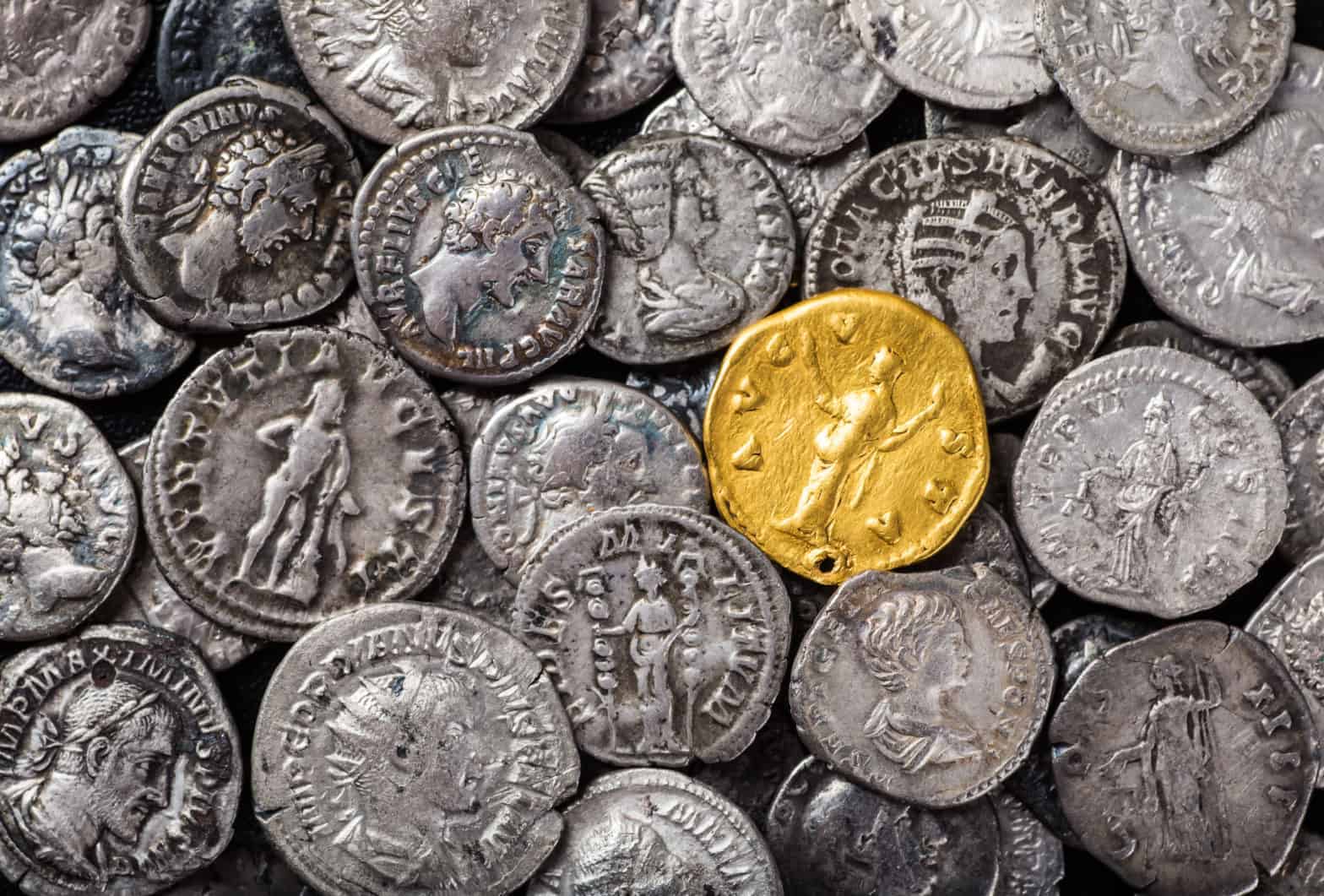Table of Contents
*This post may contain affiliate links. As an Amazon Associate we earn from qualifying purchases.
Coins are some of the most intriguing ancient artifacts.
Ancient coins can fetch a substantial price on the marketplace, and when they turn up at an archeological dig they can provide a great deal of insight into the civilization and its significance in society at that time.
Determining the value of ancient coins requires an understanding of their place and significance in history.
Ancient Coins and Numismatics – The Study or Collection of Currency
Numismatics is the study or collection of currency. The popularity of coin collecting and coin auctions has given rise to organizations and publications dedicated to the hobby. Enthusiastic numismatists stay abreast of the latest research and trends in the field.
Currency can be in the form of coins, tokens, paper money, and any other related objects that have been used as payment. For centuries, objects with perceived value such as cowry shells, precious metals, cocoa beans, large stones, and gems have been used as currency for transactions.
Coin dealers today trade the currency itself – ancient coins, rare coins, and the like. The value of old coins varies depending on a number of factors. The main factors that determine an old coins’ value are its condition, rarity, quality, historical significance, and beauty as well as its general popularity amongst coin and ancient artifact collectors.
Ancient Roman Coins and Their Role in History and the Marketplace
The first Roman coins, which were crude, heavy cast bronzes, were issued c. 289 BC. But Roman coins – while arguably the most notable for their influence on civilization – were not actually the first coins in history.
Standardized currency systems were in place by the Late Bronze Age, where tokens such as knife money and stander-sized ingots were used to transfer and hold value. This rudimentary currency eventually evolved into coin usage.
Iron Age Anatolia developed some of the earliest coins around the 7th and 6th centuries BC. Similarly, ancient Indian issued coins circa 6th century BC. Standardized cast tokens from the late Chinese Bronze Age have been documented, such as those discovered in a tomb near Anyang. These tokens were bronze replicas of an even earlier Chinese currency, cowrie shells, earning them the moniker Bronze Shell.
Soon thereafter, coins spread rapidly throughout Greece and Persia throughout the 6th and 5th centuries BC, and then further to the Balkans.
The First Ancient Coins
The Iron Age Kingdom of Lydia is said to have developed the first coin. Alyattes of Lydia, 610–560 BC minted the Lydian Lion coin. Usage of coins as common currency for commerce and trade was not firmly established until centuries later, primarily due to Roman influence.
Yet this currency was the direct antecedent of ancient Greek coinage. By way of Roman influence, these coins precipitated all Western coinage. Since that era, coins have become the most ubiquitous representation of money. Today, amongst the most famous and widely collected coins of antiquity are indeed Roman coins.
Early coins were made of electrum, a naturally occurring pale yellow alloy of gold and silver that has trace amounts of copper and possibly other metals.
The First Gold Coins and the Foundation of the Bimetallic Monetary Standard
The first gold coin was the Persian daric which, together with a silver coin, the siglos, founded the bimetallic monetary standard that remained a monetary system into the modern era.
Throughout the Roman Empire, standardized Roman currency was used for commerce and trade. Principal Roman gold and silver coins such as the Gold dinar, Solidus, Aureus, and Denarius were continued through the Middle Ages. Silver and gold coins are the most common and universally recognized throughout history, even today.
However, in modern times, most coins are made of a base metal and derive their value from their status as fiat money. Modern coin currency is typically not backed by metal, but by some form of governmentally decreed guarantee. Just like paper currency, coins are monetary tokens whose value is determined by the free market.
How to Determine the Value of an Ancient Coin
Roman coins are the most widely revered and available ancient coins on the marketplace. Their values vary greatly, depending on the specific Roman coin in question.
The most sought-after Roman coins can fetch a substantial amount on the marketplace. One of the rarest known imperial Roman coins, the Aureo medallion of Massenzio, sold at auction for nearly $1.5 million.
Familiarize yourself with the different types and values of Roman coins.
If you’re looking for rare ancient Roman coins, the best course of action is to contact numismatics dealers or auction sites that can guarantee the authenticity.
While the sale of ancient and rare Roman coins is permitted, beware that if you should stumble upon a Roman coin in the fields by coincidence, Italian law requires that competent authorities be immediately informed. Removal of the coins from the field is prohibited.

